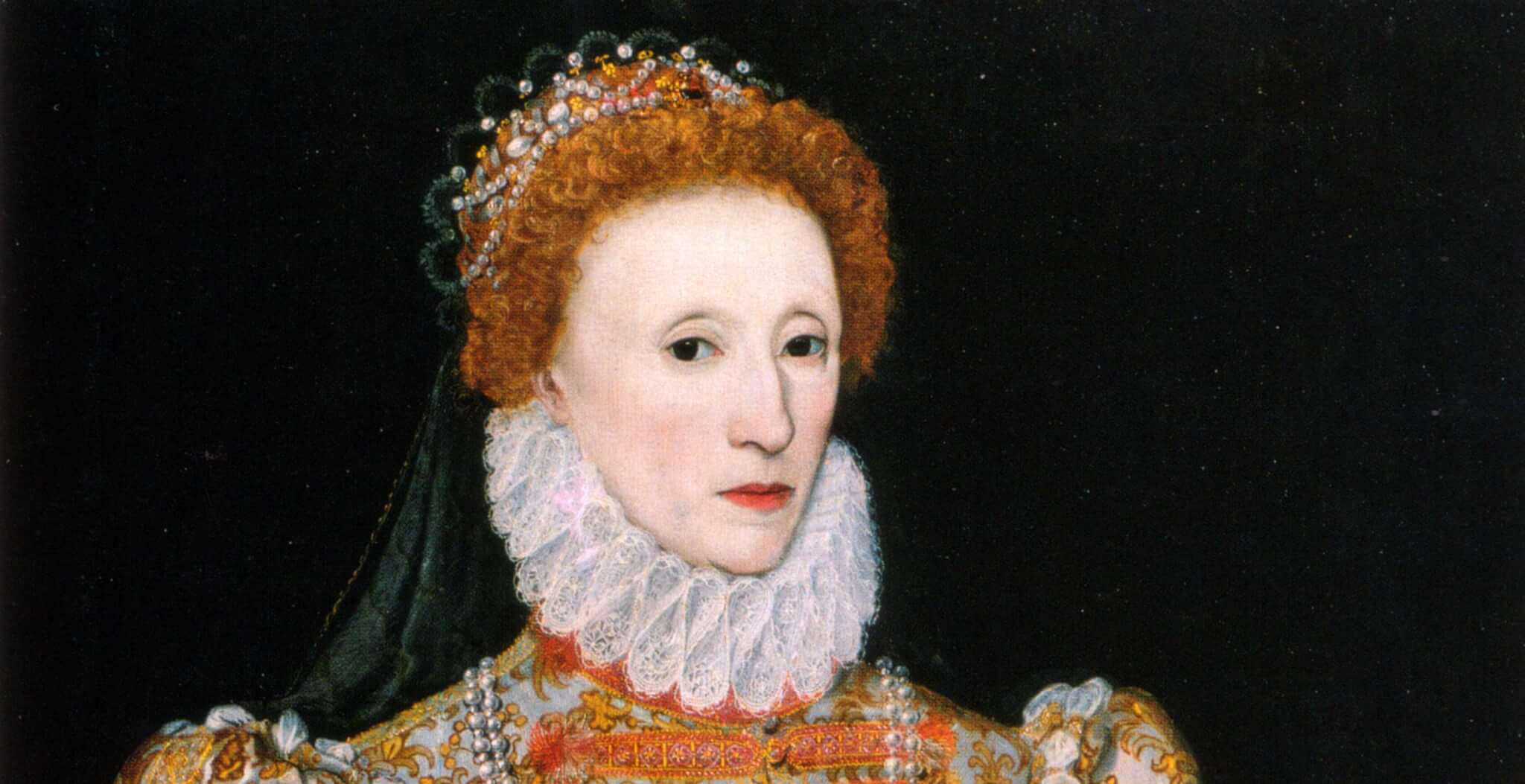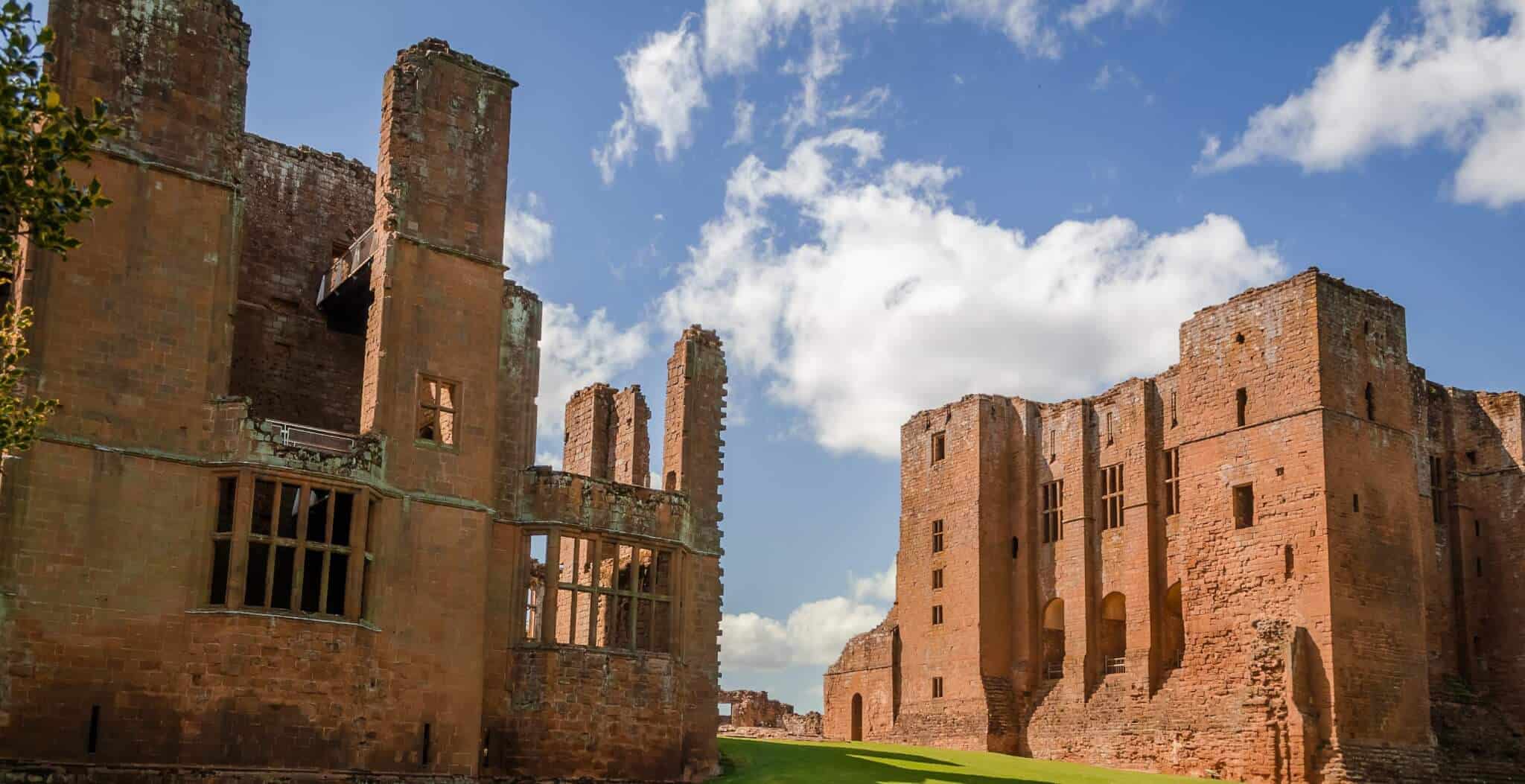A doppelgänger of her cousin Queen Elizabeth I, Lettice Knollys was a formidable Tudor woman in her own right; married three times, in and out of royal favour during her lifetime, she was a courtier who inspired intrigue and scandal in equal measure.
Born in November 1543, her father was Sir Francis Knollys who was both a Member of Parliament and Master of the Horse to Prince Edward. Through her mother’s lineage, she was related to the royal family, as her mother was the daughter of Mary Boleyn, the sister of former queen, Anne Boleyn. Mary was known to have been Henry VIII’s mistress and as a result there is speculation as to whether or not her daughter, Catherine, was in fact Henry VIII’s daughter, which would make Lettice his granddaughter.
The royal connection and lineage meant that Lettice found herself experiencing life in the royal court from a young age.
After briefly fleeing persecution during the reign of Queen Mary I as a result of their Protestant beliefs, the family returned to England in 1559 after Queen Elizabeth’s succession. With the new Protestant queen in power, all the family received new roles, including Lettice herself who became a Maid of the Privy Chamber.

By the time she was just seventeen, she married Walter Devereux, Viscount Hereford and took up residence at Chartley Castle in Staffordshire where she went on to have two daughters.
Her new family life did not prevent her from enjoying the social life of a courtier, as she continued to win favour with Queen Elizabeth and was a notable attendee at different occasions.
When she became pregnant with her first son, she was observed in the royal court socialising with Robert Dudley, Earl of Leicester, the two of them being very close with one another. Robert Dudley was in fact a favourite of the queen and thus such a sight would have instigated a moment of jealousy from the monarch.
Lettice subsequently returned to her home in Staffordshire where she gave birth to her first son, Robert. Two more sons would follow, however the youngest did not survive.
Meanwhile, her husband’s career went from strength to strength as he showed himself to be devoted in his service to Queen Elizabeth, leading to him being made a Knight of the Garter and subsequently becoming Earl of Essex.
Walter Devereux left Lettice back in Staffordshire to make a name for himself in Ireland, where he was given strict instructions to colonise and suppress the Irish province of Ulster. In his desperate attempts to impress Elizabeth and succeed in his mission, much bloodshed followed and he returned to England in 1575.
Walter Devereux duly accepted another offer from Elizabeth I, who made him Earl Marshal of Ireland. In doing so, he returned to Ireland and attended a banquet at Dublin Castle during which time he quickly became ill. He died three weeks later of dysentery leaving Lettice a young widow with four children. His earldom passed on to his eldest son Robert, who would grow up to become second Earl of Essex.
In the meantime, whilst her husband had been preoccupied with matters in Ireland, Lettice had been getting closer to the Earl of Leicester with exchanges of gifts and hunting visits to his seat at Kenilworth Castle.
The pair found time to be together when Leicester threw a lavish nineteen day festival at his castle which ended with a visit to Chartley Castle, where Lettice welcomed guests including Queen Elizabeth.

After embarking on a secret liaison for a couple of years, Lettice Knollys married Robert Dudley, Earl of Leicester in a very small private ceremony in September 1578, held at his country house in Essex.
Such a union was mired in controversy and speculation, with some claiming that Lettice had been pregnant. The most difficult obstacle however came in the form of the monarch herself, as Queen Elizabeth I was very close to Dudley and was devastated when she was told about his marriage to Lettice.
Elizabeth had always had a soft spot for Dudley and as a result, he became very fearful of his marriage becoming public knowledge.
Such a secret would however be hard to keep and around two months later Elizabeth found out, causing her to ban her once trusted member of the royal court and close relative permanently from the court. She could not and would not forgive Lettice for this betrayal and deeply resented having to come to terms with the idea that Lettice was now Lady Leicester.
The couple took up residence at Leicester House and Robert, who had known the Knollys family for some time, grew closer to his extended family, including his stepchildren.
In the meantime, Lettice gave birth to a son called Robert who sadly died when he was just three years old. This was both a personal tragedy and one that impacted their status, as at the age of forty-four Lettice was unlikely to be able to have any more children, thus ending the hopes of a Dudley dynasty.
Despite her jealousy and anger towards Lettice, Elizabeth continued to look kindly on Dudley and gave him notable roles despite the scandal oh his marriage. His next role was as commander of the English forces in the Netherlands, designed to assist the Dutch in overthrowing the Spanish King Philip II.

In 1588 with the impending threat of the Spanish Armada, Elizabeth appointed him “Lieutenant and Captain General of the Queen’s Armies and Companies”. This was to be his final role, as Dudley became ill with suspected malaria and passed away at Cornbury Park in Oxfordshire with his wife Lettice by his side.
Now a widow for the second time, Lettice was well-provided for in Dudley’s will, however the great wealth she inherited would soon be damaged by inheritance issues which forced her to defend her widow’s rights in court against accusations from Robert’s illegitimate son.
Moreover, she was also forced to deal with his debts, meaning she lost Leicester House which she had called home for the last few years. Lettice however remained undeterred by financial difficulties and went on to surprise everyone when only a year after Dudley’s death, she married soldier Sir Christopher Blount. Unsurprisingly, Lettice once again found herself at the centre of the rumour mill, with many speculating that she had already been having an affair with the military man, who also happened to be twelve years younger than her.
In 1595 she retired to her home Drayton Basset in Staffordshire, remaining estranged from life in the royal court.
In 1599 this all changed when she journeyed to London, after finding out her son Robert Devereux had been imprisoned for abandoning his post in Ireland and attempting to stage a rebellion against Elizabeth I and the influence of Sir Robert Cecil.
Supporting him was her husband, Sir Christopher Bout who also participated in the rebellion staged in February 1601.
Lettice’s attempts to help her son by offering Elizabeth a gift in the form of a gown did little to help Robert’s fate as he was subsequently tried and executed in February. To make matters worse, she subsequently lost her husband, who a month later was also executed for his crimes.
Having lost her son and her husband only one month apart, Lettice retreated to her home in Staffordshire.
In 1603, the death of Elizabeth I marked a new era and a changing time for everyone, for Lettice in particular, who benefited from the succession of James I. His wife, Anne of Denmark was close with Lettice’s daughter and thus the family was viewed more favourably, with the restoration of her grandson as 3rd Earl of Essex. Both the title and estate were restored and her debts were cancelled by the Crown.
She would live out the rest of her days surrounded by the surviving members of her family, including her two eldest daughters who remained very close to their mother.
After outliving many of her younger relatives, Lettice passed away on 25th December 1634. She was laid to rest in Beauchamp Chapel of Collegiate Church of St Mary, Warwick, with the Earl of Leicester and her young son Robert.
Lettice Knollys’ life was one of intrigue, scandal and drama. She left a lasting impression on the Tudor period and was one of the few people who could rival the formidable Queen Elizabeth I.
Jessica Brain is a freelance writer specialising in history. Based in Kent and a lover of all things historical.
Published: 14th June 2024







